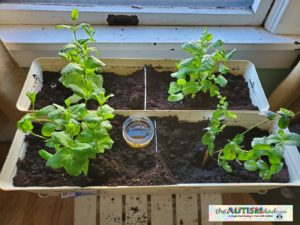In the modern era of digital connectivity, websites have evolved into indispensable tools for communication, information dissemination, and entertainment. Yet, for individuals diagnosed with autism spectrum disorder (ASD), maneuvering through these online platforms can pose significant hurdles. As designers and developers, it’s paramount to acknowledge the distinct requirements of this user demographic to foster inclusivity and accessibility in our web designs. This blog post will explore effective strategies aimed at cultivating user-friendly websites tailored to individuals with autism.
Understanding the Needs of Users with Autism
Autism is a neurodevelopmental disorder that is characterized by problems in social interaction, communication, and repetitive behaviors. Sensory sensitivities, such as sensitivity to bright lights, loud noises, or certain textures, are common among individuals with autism. When designing websites, it’s essential to minimize sensory overload and create a calming environment. This can be achieved through careful design choices, such as using muted colors, simple layouts, and clear navigation menus.

Clear and Consistent Navigation
Individuals with autism often thrive on routine and predictability. Therefore, providing clear and consistent navigation throughout the website is crucial. Utilize familiar navigation patterns, such as placing the menu bar at the top of the page or using standard iconography for links and buttons.
Simplify Content and Language
When creating content for your website, aim for simplicity and clarity. Break down information into digestible chunks and use plain language whenever possible. Consider incorporating visual aids, such as images, diagrams, or videos, to enhance comprehension. Additionally, providing alternative formats, such as text-to-speech functionality, can cater to users with varying communication preferences.
Creating a Sensory-Friendly Experience
Sensory sensitivities can significantly impact the user experience for individuals with autism. To create a sensory-friendly website, consider the following:
• Limiting Visual Distractions: Minimize clutter and unnecessary animations that may overwhelm users. Provide options to adjust brightness and contrast settings to accommodate varying visual preferences.
• Reducing Auditory Stimuli: Avoid autoplay videos or audio elements that can startle users. Offer controls to mute or adjust volume levels to suit individual preferences.
• Customizable Settings: Empower users to personalize their browsing experience by offering customizable settings for font size, color schemes, and other visual elements.
Incorporating SEO Best Practices
Search engine optimization (SEO) is fundamental in ensuringyour website reaches its intended audience. By implementing SEO best practices, you can improve your site’s visibility while making it more accessible to users with autism. One essential aspect of SEO is optimizing website structure and content to enhance search engine rankings. This involves using relevant keywords, creating descriptive meta tags, and organizing content in a hierarchical manner. By prioritizing accessibility and user experience, you can attract more visitors to your site and create a positive online presence. In crafting websites to be inclusive and user-friendly for individuals with autism, integrating Click Intelligence insights can enhance accessibility and ensure a positive browsing experience for all users.
Conclusion
Crafting websites with autism-friendly features demands a conscientious and compassionate approach. By comprehending their distinct requirements and preferences, we can forge digital environments that are accommodating, accessible, and inviting to everyone. From streamlined navigation to sensory-conscious design elements, each facet of the website contributes significantly to fostering a favorable user experience. Through the integration of these tactics and a commitment to inclusivity, we can contribute to a more welcoming internet landscape for all individuals.




